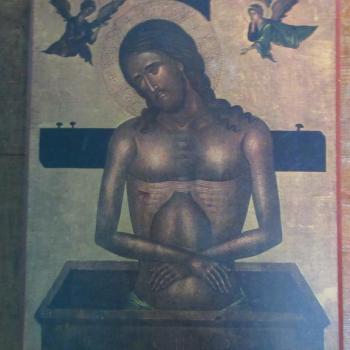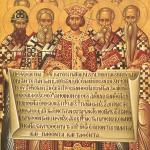John Henry Newman on the organic nature of renewal and reform affected by Benedictine monasticism of old.
“When the bodily frame receives an injury, or is seized with some sudden malady, nature may be expected to set right the evil, if left to itself, but she requires time; science comes to shorten the process, and is violent that it may be certain. This may be taken to illustrate St. Benedict’s mode of counteracting the miseries of life. He found the world, physical and social, in ruins, and his mission was to restore it in the way, not of science, but of nature, not as if setting about to do it, nor professing to do it, by any set time or by any rare specific or by a
ny series of strokes, but so quietly, patiently, gradually, that often, till the work was done, it was not known to be doing. It was a restoration rather than a visitation, correction, or conversion. The new world which he helped to create was a growth rather than a structure. Silent men were observed about the country, or discovered in the forest, digging, clearing, and building; and other silent men, men not seen, were sitting in the cold cloister, trying their eyes, and keeping their attention on the stretch, while they painfully deciphered and copied and re-copied the manuscripts which they had saved. There was no one that “contended or cried out,” or drew attention to what was going on; but by degrees the woody swamp became a hermitage, a religious house, a farm, an abbey, a village, a seminary, a school of learning, and a city. Roads and bridges connected it with other abbeys and cities, which had similarly grown up; and what the haughty Alaric or fierce Attila had broken to pieces, these patient meditative men had brought together and made to live again.
“And then, when they had in the course of many years gained their peaceful victories, perhaps some new invader came, and with fire and sword undid their slow and persevering toil in an hour. The Hun succeeded to the Goth, the Lombard to the Hun, the Tartar to the Lombard; the Saxon was reclaimed only that the Dane might take his place. Down in the dust lay the labor and civilization of centuries — churches, colleges, cloisters, libraries–and nothing was left to them but to begin all over again; but this they did without grudging, so promptly, cheerfully, tranquilly, as if it were by some law of nature that the restoration came, and they were like the flowers and shrubs and fruit trees which they reared, and which, when ill-treated, do not take vengeance, or remember evil, but give forth fresh branches, leaves, or blossoms, perhaps in greater profusion with richer quality, for the very reason that the old were rudely broken off.
“If one holy place was desecrated, the monks pitched upon another, and by this time there were rich or powerful men who remembered and loved the past enough to wish to have it restored in the future. Thus it was in the case of the monastery of Ramsey, after the ravages of the Danes. A wealthy Earl whose heart was touched, consulted his Bishop how he could best promote the Divine glory; the Bishop answered that they only were free, serene, and unsolicitous who renounced the world, and that their renunciation brought a blessing on their country. ‘By their merit,’ he said, ‘the anger of the Supreme Judge is abated; a healthier atmosphere is granted; corn springs up more abundantly; famine and pestilence withdraw; the state is better governed; prisons are opened; the fetters unbound; the shipwrecked relieved.’
“He proceeded then to advise him to give ground for a monastery and to build and endow it. Earl Alwin observed in reply, that he had inherited some waste land in the midst of the marshes, with a forest in the neighborhood, some open spots of good turf, and others of meadow; and he took the Bishop to see it. It was in fact, an island in the fens, and as lonely as religious men could desire. The gift was accepted, workmen were collected, the pious peasants round about gave their labor. Twelve monks were found from another cloister; cells and a chapel were soon raised. Materials were collected for a church; stones and cement were given; a firm foundation was secured; scaffolding and machinery were lent; and in course of time a sacred edifice and two towers rose over the desolate waste, and renewed the past.”
















